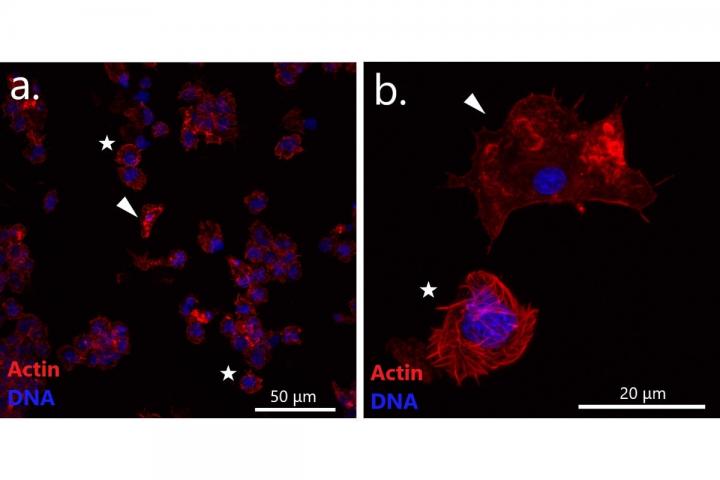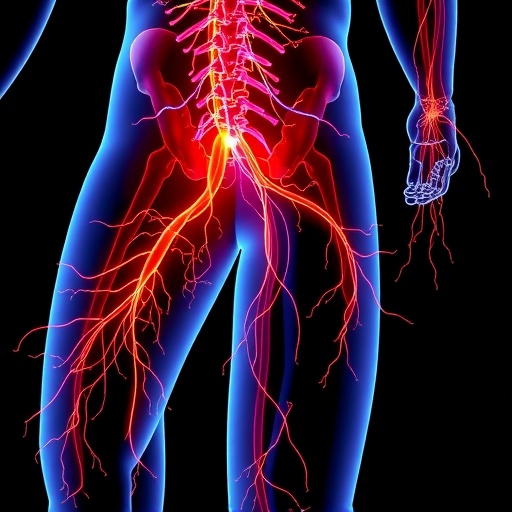The disease can have an adverse effect on the populations of these molluscs, which are extensively farmed in Russia.

Credit: SPbU
‘A transmissible cancer was first discovered in dogs in the middle of the 19th century. It is transmitted sexually from a sick dog to a healthy one, the cancer cells themselves being the infective agent. In the 1990s, a contagious cancer was discovered in the Tasmanian devil. Since the cancer was found in only two species of mammals, scientists used to think that it is quite rare in the nature. However, time has come to reconsider this view. A transmissible cancer appears to be fairly widespread among bivalve molluscs,’ says Maria Skazina, a research associate at the Department of Applied Ecology at St Petersburg University and the first author of the publication in Scientific Reports.
Disseminated neoplasia (DN) is a large-scale, fatal cancer disease of bivalve molluscs, which can be compared to leukemia in vertebrates. Diseased mussels have cancer cells, which circulate in the hemolymph, a functional analogue of blood. As neoplasia develops, they infiltrate all tissues and organs, disrupting their work.
The causes of this disease were described for the first time in 2016 in an article published by a group of scientists under the leadership of by Michael Metzger in Nature. The authors showed that disseminated neoplasia was a transmissible cancer lineage. Its cells have their own genotype, different from those of the molluscan hosts. In a way, they are parasites transmitted from sick individuals to healthy ones.
‘A study proposing a mechanism of the transfer of cancer cells between individuals was published last year. When the mussel is under stress, the cells of its haemolymph can leave the body, exist for some time in the environment and then invade other mussels. This process has been observed in healthy molluscs. Cancer cells, it would seem, might use this mechanism too,’ says Maria Skazina. ‘However, this is only a hypothesis. To test it, sophisticated experimental research is necessary’.
Mussels Mytilus are important commercial invertebrates. Two genetic lineages of transmissible cancer are known in them: BTN1 and BTN2 (BTN stands for bivalve transmissible neoplasia). Both of them originated from the Pacific mussel Mytilus trossulus, which is also found in the Far Eastern and Northern seas of Russia.
‘So far, BTN1 lineage has been found in a single mussel population at the Pacific coast of North America. BTN2 is much more widespread. Before our research, it had been found in several mussel species in Europe and South America, though not in the parental species Mytilus trossulus,’ says Maria Skazina.
In 2019, marine biologists from St Petersburg University, A.V. Zhirmunsky National Research Centre of Marine Biology, and the University of Helsinki joined forces to search for transmissible cancer lineages in the mussels of the Russian seas. To diagnose the disease, they developed an integrated approach, which included cytological and molecular genetic tests, and applied it to the mussels Mytilus trossulus from the Sea of Japan, in which disseminated neoplasia had been previously shown.
In the haemolymph of molluscs from the Gaydamak Bay near the port city of Nakhodka, flow cytometry and immunocytochemistry methods revealed neoplastic cells. They are large, have polyploid nuclei and an abnormal cytoskeleton resembling the spines of a bristling hedgehog. Genotyping of the haemolymph and other tissues by nuclear and mitochondrial characteristics revealed genetic ‘chimerism’ of the sick mussels, that is, the presence of more than one individual genotype. Multiple alleles (different forms of the same gene that determine the development of a particular trait) were separated by molecular cloning. All diseased mussels were found to have ‘additional’ genotypes corresponding to BTN2. This means that the scientists from St Petersburg University and their colleagues proved, for the first time, the presence of BTN2 in Mytilus trossulus as well as the presence of transmittable cancer in mussels from the Sea of Japan and the Northwest Pacific.
At the next stage of the research, the scientists used molecular phylogenetic methods to compare the sequences of the mitochondrial BTN genes obtained by them with all the homologous sequences of the mussels themselves stored in the NCBI genetic bank. It turned out that the mitochondria of BTN2 are most similar to those of Mytilus trossulus from the Russian seas. It was probably there that ‘patient zero’ lived, the mussel that ‘gave birth’ to this transmissible cancer.
The Baltic Sea mussels were also shown to have BTN2. In 2014, Polish biologists found an unusual mitochondrial genotype in a Baltic mussel, which they interpreted as the genotype of Mytilus trossulus. It is now clear that this was not a mussel genotype, but a BTN2 genotype. It appears that the transmissible cancer that the scientists were looking for in the Far East could be found much closer to St Petersburg. Whether this disease is common among the molluscs of the Baltic Sea remains to be found out.
‘This disease is so virulent for invertebrates because they do not have a developed immune system that can reliably distinguish alien cells from their own. Transmissible cancer of molluscs cannot harm humans in any way. However, the disease can be detrimental for the mussel marine culture. We do not yet know how widespread transmissible cancer is among mussels in Russia,’ says Maria Skazina.
The scientists now continue to search for transmissible cancer in mussels in different seas of Russia. Preliminary evidence suggests that it is found not only in mussels in the Sea of Japan and the Baltic Sea and that its diversity is not limited to BTN2 lineage. They are also developing a method for rapid diagnosis of the disease in order to monitor it in natural and commercial populations of molluscs.
‘Hopefully, our work might be of help for comparative oncology. I think that mussels, as a research model, can tell a lot about the mechanisms of the spread of cancer in different species, including humans,’ notes Maria Skazina.
###
Media Contact
Polina Ogorodnikova
[email protected]
Related Journal Article
http://dx.




